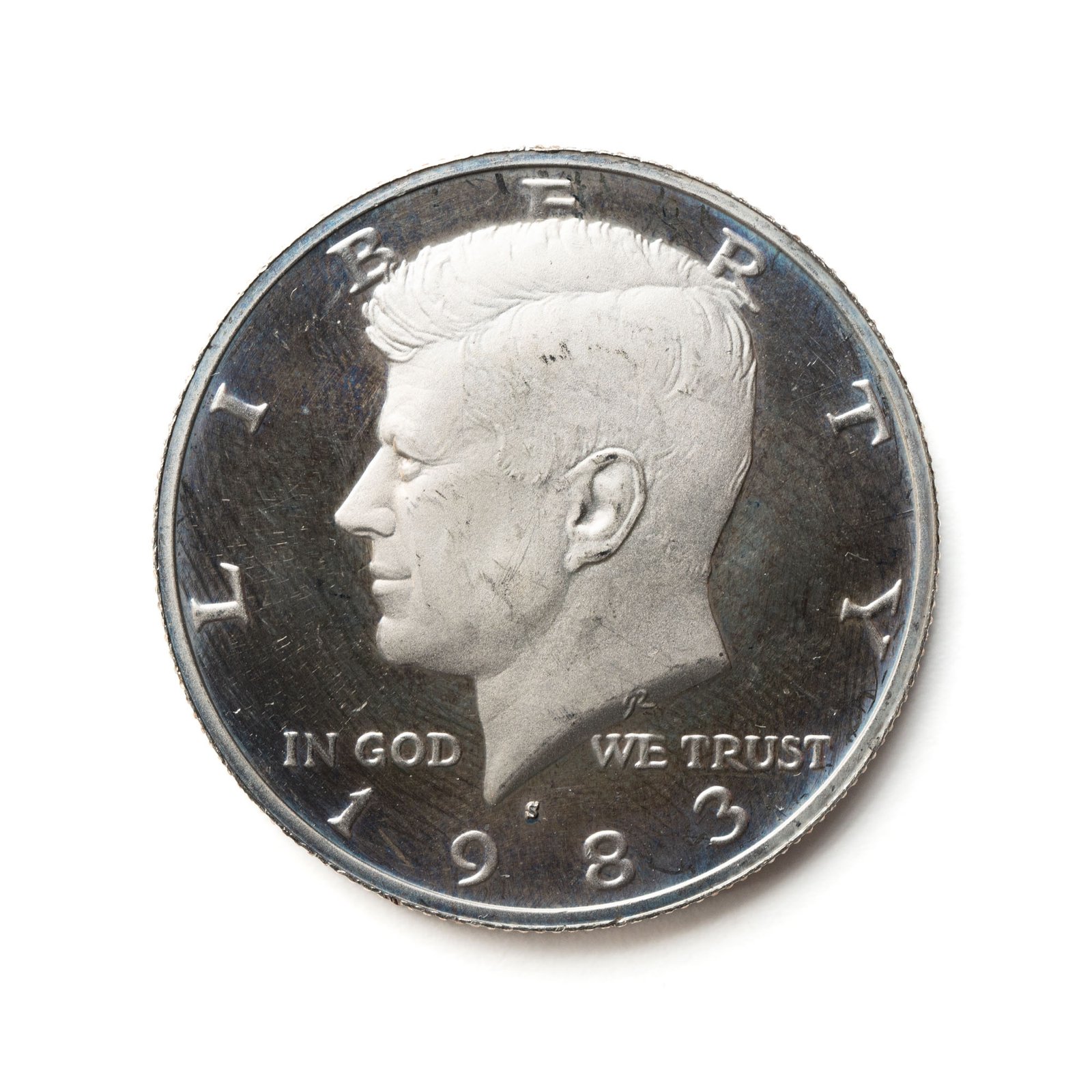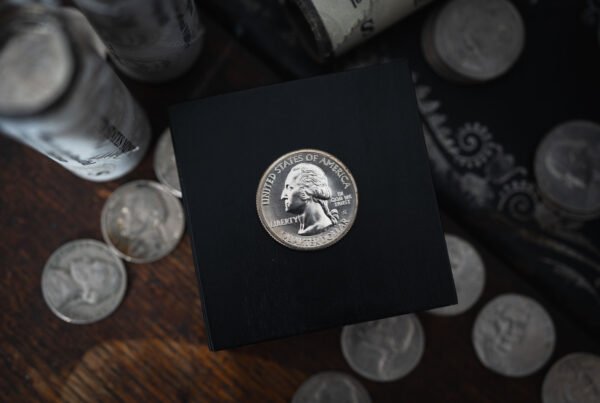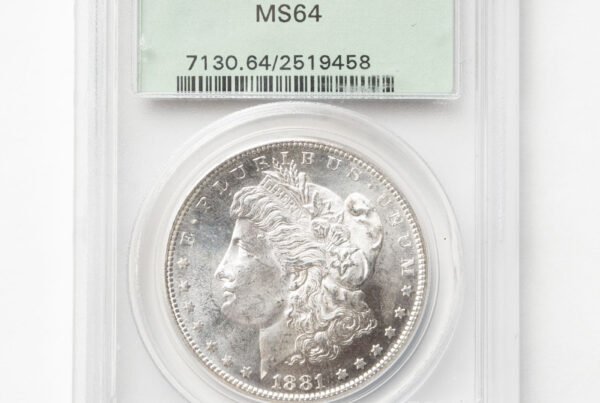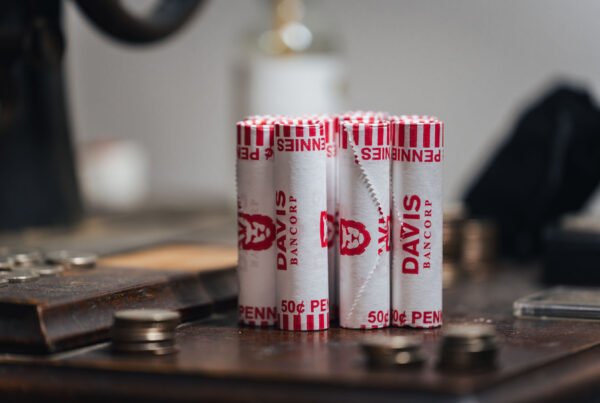Few coins in America carry as much emotional and historical significance as the Kennedy Half Dollar. In 1964, shortly after the tragic assassination of President John F. Kennedy, the coin quickly emerged as a symbol of national mourning, pride, and remembrance. Over the years, the Kennedy Half Dollar has changed in its materials and applications, transforming from a common circulation item to a centerpiece for collectors.
In this piece, we will explore the background of the Kennedy Half Dollar, its specifications, and its current value.
1. Kennedy Half Dollar History
The Kennedy Half Dollar was first issued in 1964, shortly after the assassination of President Kennedy on November 22, 1963. In response to public demand for a coin in honor of the deceased president, the U.S. Treasury quickly took action.
- Design: The coin features a left-profile image of President Kennedy, designed by Gilroy Roberts (above), and the reverse features the presidential seal designed by Frank Gasparro.
- Authorization and Production: The coin was authorized by Congress in December 1963, and the first coins were minted in January 1964.
- Public Demand: When the 1964 Kennedy Half Dollar was issued, it was quickly collected by both numismatists and the general public. Although the coin was intended for everyday use, very few coins entered circulation.
Over time, the coin’s metal composition and minting methods have changed. Although it is still produced today, it is rarely seen in everyday circulation.
2. Kennedy Half Dollar (1964–Present) Specifications
The Kennedy Half Dollar has undergone three primary compositional changes since it was first introduced:
| Years | Composition | Weight | Diameter | Edge |
| 1964 | 90% Silver, 10% Copper | 12.5 g | 30.6 mm | Reeded |
| 1965–1970 | 40% Silver (outer layers) | 11.5 g | 30.6 mm | Reeded |
| 1971–Present | Copper-Nickel Clad (no silver) | 11.34 g | 30.6 mm | Reeded |
Key points:
- The Kennedy Half Dollar was exclusively composed of 90% silver for circulation in 1964.
- Coins produced from 1965 to 1970 contain 40% silver and were slowly removed from general circulation.
- Coins minted after 1970 are made from a copper-nickel clad alloy and are not regarded as precious metal coins.
3. 1964 Kennedy Half Dollar 1964 Specifications (and Melt Value)
The 1964 Kennedy Half Dollar is valuable not only for its significance but also for its silver composition.
Specifications:
- Composition: 90% Silver, 10% Copper
- Silver Weight: 0.3617 troy ounces
- Diameter: 30.6 mm
- Weight: 12.5 grams
Melt Value:
In mid-2025, when silver was around $38 per ounce, the 1964 Kennedy Half Dollar would have a melt value of approximately: $38 x 0.3617 ≈ $13.74.
4. Kennedy Half Dollar (1965–1970) Specifications and Melt Value
Coins minted between 1965 and 1970 contain 40% silver and are slightly lighter than the 1964 version.
Specifications:
- Composition: 40% Silver (outer layers), 60% Copper (core)
- Silver Weight: 0.1479 troy ounces
- Diameter: 30.6 mm
- Weight: 11.5 grams
Melt Value:
If silver is $38 per ounce, the approximate melt value of Kennedy Half Dollars from 1965 to 1970 is:
$38 x 0.1479 ≈ $5.62.
5. What Are Kennedy Half Dollars Worth Today?
The value of a Kennedy Half Dollar is determined by its year, condition, mint mark, and whether it was minted for circulation, as a proof, or as a special collector’s edition.
Circulated Coin Value Overview:
| Year | Type | Typical Value |
| 1964 | 90% Silver | $10–$15 (melt and collector) |
| 1965–1970 | 40% Silver | $4–$8 (depending on condition) |
| 1971–Present | Clad | $0.50 (face value) – $2 |
| 1992–Present | Silver Proofs | $10–$25 (higher for rare years) |
Conclusion
The Kennedy Half Dollar is more than just a coin – it is a significant part of American heritage. While the 1964 and 1965-1970 editions have real silver melt value, the coins from later years capture the attention of numismatists and collectors.
Whether you have a few to spare or are thinking of putting together an entire collection, these coins embody both the nation’s history and the artistry of coin design. As silver prices fluctuate and interest among collectors grows, the Kennedy Half Dollar stands as an example of how a coin can embody a specific era and remain significant for many years to come.



